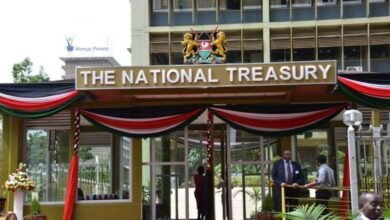
The World Bank Group now sees the Kenyan economy expanding by a higher five percent this year.
This is in contrast to a lower projection of 4.5 percent, an outlook posted at the end of June.
The new projection is contained in the multi-lateral lender’s October projections for economies in Sub-Saharan Africa (SSA) which were published on Wednesday.
The greater projection for growth in Kenya has been anchored on the observed broad-based rebound to economic activity.
“This positive outlook reflects improvements in construction, education, ICT and real estate sectors. Inflation remains contained near the Central Bank objective, and monetary policy continues to support growth,” the report notes.
Last year, the World Bank projected a growth of 1.5 percent in the baseline scenario due to the negative impact of the COVID-19 pandemic on Kenya’s Gross Domestic Product (GDP).
Nevertheless, the World Bank predicts slower growth into the medium term with Kenya’s GDP estimated to grow by an average of 4.8 percent in 2022 and 2023 in contrast to a higher outlook of five percent previously.
Across the region, the World Bank expects most economies in SSA to step out of recession with average growth estimated at 3.3 percent, a higher projection that 2.3 percent in April.
Growth is seen to be anchored on elevated commodity prices, the relaxation of stringent measures to contain the COVID-19 pandemic and recovery in global trade.
Non-resource rich countries such as Kenya are expected to grow at a faster rate compared to peers.
Even so, the World Bank still sees headwinds to the recovery including greater public debt levels whose rise preceded the global health crisis and inflation as food and fuel costs rise.
The greater debt levels are expected to limit fiscal space blocking many economies from obtaining supplementary resources to affirm the comeback.
Kenya’s debt levels are for instance expected to hit 69.2 percent of GDP by the end of 2021 from 65.8 percent at the end of 2020.
Also Read:
- September inflation rate rises to 6.91% from 6.57% in August
- Manufacturers want KRA to shelve inflation adjustment on specific rates of excise duty
- AfDB blacklists multimillion Kenyan IT firm over fraud
The economy has previously undergone rebasing six times including in 1957, 1967, 1976, 1985, 2005, and 2014. The 2014 rebasing saw Kenya become a middle-income country, overtaking countries such as Ethiopia, Tunisia and Ghana.
However, Gabriel Mwendwa, an Investment Associate at Horizon Africa Capital says Kenya is likely to get into more debts with the government likely to cash in on the country’s improved GDP.
“The government will likely use that as an excuse to actually borrow more money because now they’ll say we had 70 percent to GDP ratio but we’re at 55 percent. So, we can actually borrow more and that is what they will go back to parliament with and tell parliament we thought our debt position was bad,” said Gabriel Mwendwa.
Despite the projections, the Washington-based financial body has warned that Kenya’s economic growth is still vulnerable to the effects of the pandemic as the vaccination program continues.
It sees inequalities in vaccine supply as the greatest danger to the recovery of the SSA as it warns of a two-track recovery which places advanced economies on a better footing.
However, the WB’s prediction does not mirror that of the National Treasury which expects the economy to rebound by 6.6 percent in 2021 through the government’s intent to better the microeconomic environment in the ongoing implementation of the Big 4 Agenda.
Kenya is keen on fast-tracking implementation of the agenda to enhance food and nutrition security, achieve Universal Healthcare Coverage (UHC), provide affordable housing and support growth of manufacturing sector for job creation.
The Big 4 have been allocated Ksh.142.9 billion in the next Financial Year 2021/22 Ksh.3.03 trillion national budget.
In comparison, the IMF expects the Kenyan economy to rebound by 6.7 per cent while global ratings agency Standards and Poors ($&P) sees growth at a lower 4.4 percent.





